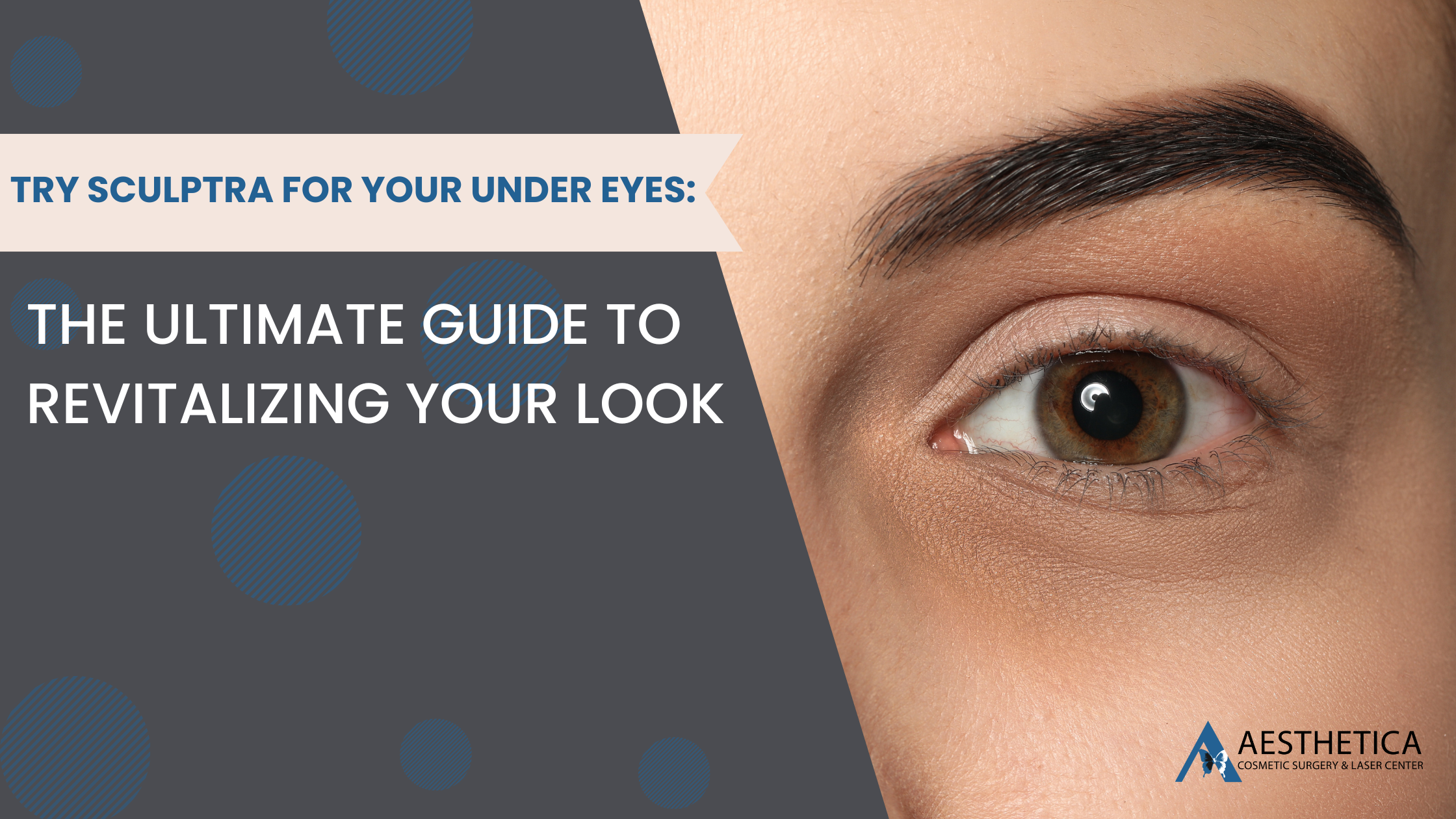
Aesthetica Editorial Team

Breastfeeding, an intimate bond between a mother and her child, evokes images of nurturing care and selfless protection. Yet, in the age of cosmetic enhancements like breast implants, questions arise about their compatibility with nursing.
While it might seem like a complex task, balancing infant nutrition with breast implants is achievable. This article will provide an in-depth exploration of the topic, offering clarity and confidence to all mothers!
Breast Implants and Their Impact on Breastfeeding
Many mothers with breast implants successfully breastfeed their babies, although there might be challenges related to milk supply.
The placement of these implants — whether above or below the chest muscle — can influence the breastfeeding experience. Moreover, the incision’s location, such as under the breast fold or around the areola, might impact the milk ducts or nerves.
It’s important to note that no evidence suggests any risks to infants when breastfed by mothers with implants.

Tips for Successful Breastfeeding With Implants
Breastfeeding is a unique journey for every mother. When paired with the challenges and intricacies of breast implants, mothers often feel uncertain about the path ahead.
To bridge this gap, here are essential tips to ensure a successful breastfeeding experience for mothers with implants:
Consult Before Surgery
Before diving headfirst into the world of breast implants, it’s pivotal to discuss your plans and concerns with a professional. They can tailor the surgical approach to optimize your breastfeeding prospects. For instance, the surgeon might recommend placing the implant below the muscle or opting for an incision site less likely to interfere with breastfeeding.
Understand Your Body
Breastfeeding is as much an emotional journey as it is physical.
Every woman’s body responds differently, whether it’s how the milk flows, how the baby latches, or how the breast tissues adapt post-implant. Initial challenges might arise, like reduced milk flow or discomfort, but it’s essential to recognize these as mere bumps on the road. Patience, perseverance, and self-love go a long way. By listening to your body and responding to its signals, you stand a better chance of overcoming challenges and enjoying a fulfilling breastfeeding experience.
Seek Lactation Consultation
Even with all the resolution in the world, sometimes mothers need a guiding hand, especially if they have implants. That is where lactation consultants come into the picture.
They can introduce positions that minimize discomfort for mothers with implants or suggest techniques to enhance milk flow. Moreover, they provide invaluable emotional support, often acting as pillars of strength during trying times.
Seeking their guidance not only equips mothers with the necessary tools but also provides comforting reassurance.
Additional Tips for Successful Breastfeeding With Implants
- Stay Informed: Research and gather as much information as possible about breastfeeding post-implant surgery. Being informed boosts your confidence to face challenges head-on.
- Use Breast Pumps: If direct breastfeeding proves challenging, consider using a breast pump to help stimulate milk production.
- Join Support Groups: Being part of a community of mothers who have faced similar challenges provides emotional solace. These platforms can be a treasure trove of advice and shared experiences.
- Stay Hydrated & Eat Well: Your body needs nourishment to produce milk. Ensure you maintain a balanced diet and drink plenty of water.
By following these tips and maintaining a positive outlook, breastfeeding with implants can be as fulfilling and enriching as any other breastfeeding journey. Remember, it’s all about the bond you share with your child, and with the right guidance, you will navigate this path successfully!

Navigating the Breastfeeding Journey With Implants
Embarking on a breastfeeding journey is as challenging as it is rewarding. With the addition of breast implants, mothers might feel like sailing in uncharted waters. However, with the right preparation, information, and support, these waters can become less daunting and easier to navigate.
Here’s a comprehensive guide on how to steer through breastfeeding with implants:
Yes, You Can Breastfeed With Breast Implants
First and foremost, let’s debunk the pervasive myth that you cannot breastfeed with breast implants. The ability to breastfeed largely depends on the surgical technique used during the implant procedure and whether the milk ducts, glands, and nerves were affected.
For example, incisions made under the fold of the breast or through the armpit have less likelihood of impacting breastfeeding capability than incisions around the areola. Implants placed beneath the chest muscle also tend to cause fewer disruptions than those placed above the muscle but beneath the breast gland.
Identifying Potential Breastfeeding Challenges
While many women with implants breastfeed without issues, some challenges might crop up, such as:
- Reduced milk supply: Some mothers might find their milk supply is impacted due to the surgery, especially if milk ducts or glands were disrupted.
- Mastitis or blocked ducts: This inflammation of the breast tissue is more common in women with implants due to potential disruptions to milk flow.
- Breast sensitivity: Some mothers experience increased sensitivity or discomfort, especially during the initial days of breastfeeding.
Depending on the peel’s depth, most patients can expect to return to their routine within 2-3 weeks. Though redness may linger for a few weeks, it can easily be masked with makeup. The skin’s final rejuvenated appearance will fully unveil in 2-3 months, revealing a refreshed, even-toned, and youthful complexion.

Ensuring Optimal Latch
Ensuring your baby achieves a proper latch is key to successful breastfeeding. This might require a bit more patience and trial with different breastfeeding positions. Mothers with implants might find that traditional positions cause discomfort or not facilitate optimal milk flow. Working with a lactation consultant will help discover both comfortable and effective breastfeeding positions.
Monitoring Your Baby's Growth
With implants, there could be concerns about whether the baby is receiving adequate nutrition. Regular pediatrician visits to monitor your baby’s growth, weight gain, and overall health can offer reassurance. If there are any concerns, supplementary feeding may be advised.
Seeking Support and Being Patient
It’s crucial for mothers with implants to surround themselves with a supportive network, whether it’s friends, family, lactation consultants, or online communities.
Breastfeeding has its set of challenges, and having a supportive circle can make all the difference. Above all, patience is key. It’s alright to experience challenges and hiccups along the way. What’s important is to keep going, seek help when needed, and cherish the unique bond breastfeeding creates between you and your child!
Meet us at 19500 Sandridge Way, Suite 350, Leesburg, VA 20176, or call us at (703) 574-4342 for a complimentary consultation with Board-Certified Plastic Surgeon Dr. Phillip Chang before moving forward with your procedure. If everything matches up, our team will help you navigate the entire process from beginning to end. Also, remember to check out our blog and social media for more information on plastic surgery and plastic surgery trends!
References
- “Breast Surgery.” Centers for Disease Control and Prevention, 9 July 2023, www.cdc.gov/breastfeeding/breastfeeding-special-circumstances/maternal-or-infant-illnesses/breast-surgery.html. Access date: 11 August 2023.
Let Us Help You!
Our office can provide you with helpful information, schedule a free consultation, and walk you through the many services and procedures we provide.
Contact Dr. Chang's Office:
More Articles For You

Find Your Glow: 7 Reasons Why Aesthetica Is the Best Microneedling Provider in Leesburg, VA!
In the quest for vibrant, youthful skin, microneedling has emerged as a cornerstone treatment, beloved

Try Sculptra for Your Under Eyes: The Ultimate Guide to Revitalizing Your Look
In aesthetic enhancements, Sculptra has emerged as a revolutionary treatment, especially for addressing concerns about

The Latest Techniques in Double Chin Removal in Leesburg, VA
In the charming town of Leesburg, VA, where looking good and feeling great are top

The Art of Refining the Side Profile of a Woman through Plastic Surgery
In the realm of cosmetic enhancements, the side profile of a woman holds a pivotal
